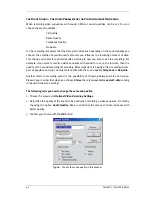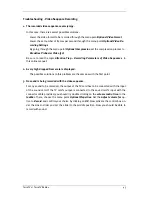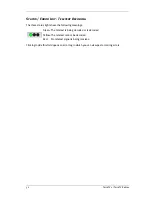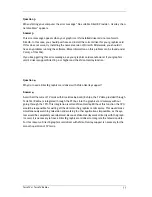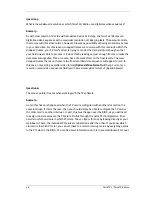
56
/ TerraTV Radio+
Question 5:
What is the maximum resolution at which /Radio+ can digitalize video sequences?
Answer 5:
As with most common TV cards with Brooktree 848 or 878 chips, the /Radio+ can
digitalize video sequences with a maximum resolution of 768x576 pixels. The amount of data
that comes with this video format, however, blows any possibility of having momentary access
to your hard drive. For this reason, dropped frames are common with this resolution. With the
dropped frames, your TV card's driver is trying to control the data yield just enough so that
your hard drive is able to process it. It does this by leaving out just enough frames to make the
data mass manageable. This, of course, has a dramatic effect on the final results. The more
dropped frames there are, the more the final recorded video sequence will appear to jerk. In
this case, only setting a smaller video format
(Options\Video Format)
will help. Current sys-
tems can record video sequences fluidly with a maximum video format of 384x288 pixels!
Question 6:
The mouse pointer freezes when working with the TV software.
Answer 6:
So far, this has only happened when the TV card is configured with another slot card on the
same interrupt. If this is the case, then you should simply be able to configure the TV card or
the other card to another interrupt. In part, this must happen over the BIOS, as you will need
to assign concrete values to the PCI slots. Do this through the point PCI Configuration. First,
ascertain which cards are in which PCI slots. You can figure this out by looking directly at your
mainboard. There, the individual PCI slots are labeled one after the other. If you know which
slot card is in which PCI slot, you can set these to a certain interrupt value by assigning a value
to the PCI slots in the BIOS. You can find more information on this in your mainboard's manual.

